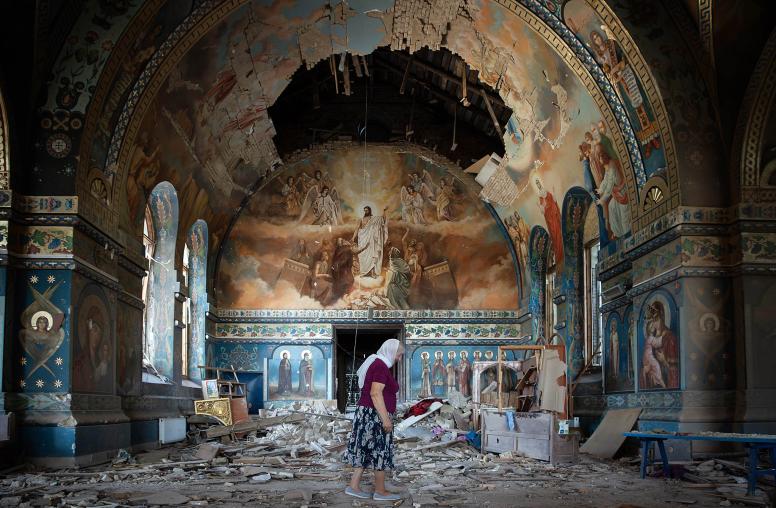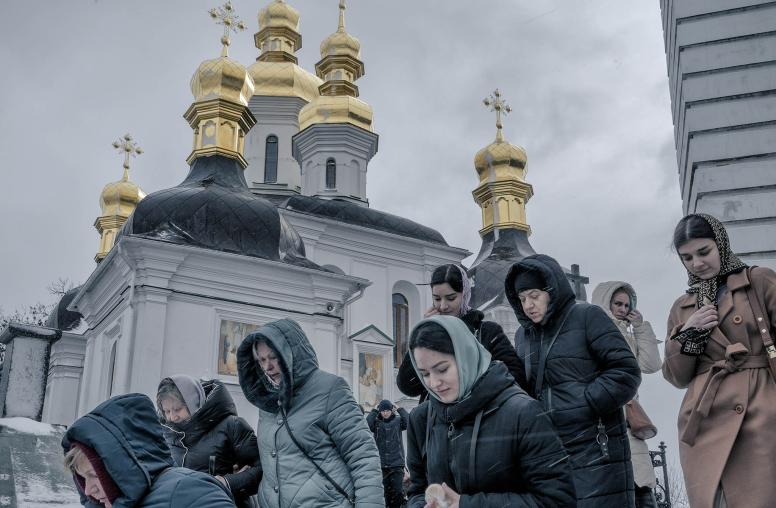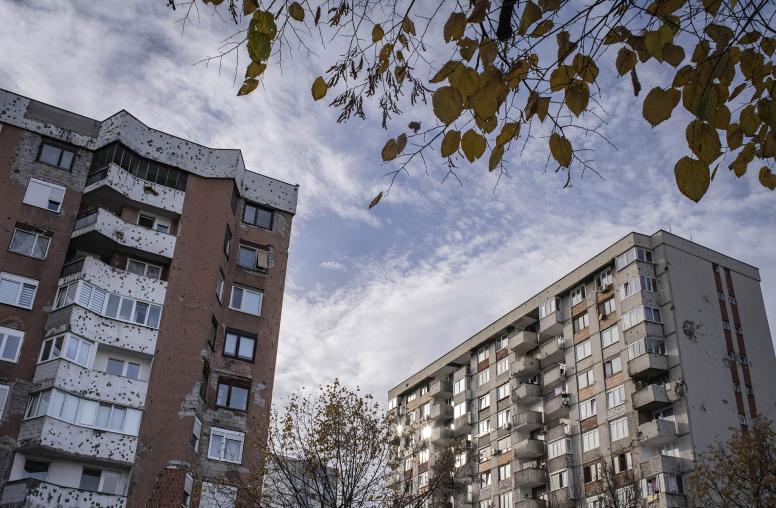How Military Chaplains Are Key Agents for Peace for the U.S. Armed Forces
Chaplains can help commanders understand the religious landscape, but more training and resources are needed to bolster their role.
Over the past few decades, U.S. military chaplains have increasingly played a key role in promoting peaceful resolutions in conflict environments. While their primary mission across the service branches is pastoral care — leading religious services, providing counsel and offering spiritual guidance, for example — military chaplains have also, at times, served as liaisons and bridge-builders with local religious leaders.

Religion matters in every area of operation to varying degrees, and military planners have increasingly recognized over the past two decades how religion contributes to peace and conflict dynamics. Being recognized as religious leaders, chaplains, by definition, "get religion." They are uniquely suited to provide religious advisement in ways diplomats cannot through peer-to-peer meetings with religious leaders and actors when deployed. Their insights can help their commanders to understand how to navigate religious dynamics in an area of operation.
Chaplains, the military’s own religious actors, can play an expanded role in understanding those dynamics. In contexts as diverse as Bosnia, Iraq and Afghanistan, military chaplains have proven they can build trust and establish relationships outside the wire, creating entry-points into communities where previously unfeasible.
Serving as de facto religious diplomats, there are many examples where chaplains helped their units gain access to local religious leaders by establishing a rapport and even friendship through common ground of their religious and spiritual identities. In Afghanistan, one chaplain offered to train an Afghan imam to be a military chaplain — creating a bond of trust between them that would open doors. In Iraq, another chaplain helped bring together Sunni and Shia Muslim leaders to promote violence reduction strategies. Joint trainings between chaplains from many divisions — including through the National Guard State Partnership Program — as well as meetings with chaplains from partner countries, such as an exchange with representatives from several African countries and U.S. states, exhibit the numerous other ways that chaplains have expanded their capacity to engage and advise while at the same time creating an opportunity to build relationships between cultures.
Military chaplains are a unique resource that can help commanders understand the religious terrain. Yet without specialized training in religious engagement and a commitment to proper resourcing such as through the chaplains’ schoolhouse, their immense potential will go untapped — and lessons learned will be lost.
Harnessing Chaplains Peacebuilding Potential
Recent policy guidance is trying to address this concern. The Joint Chiefs of Staff issued in October 2020 policy instructions mandating “all Department of Defense (DoD) Components … implement religious affairs (RA) as an essential Joint Force enabler and staff function.” In this function, the instructions also prescribe that key religious affairs functions support the Combatant commander. To fulfill this tasking, it “directs appropriate Service professional military educational requirements to ensure leaders and strategic-level chaplains are equipped to fully implement RA at Combatant Commands.”
The policy instructions build off a 2013 publication, which provides the doctrine for religious affairs in joint operations, and on “the chaplain’s roles as the principal advisor to the joint force commander (JFC) on religious affairs and a key advisor on the impact of religion on military operations.”
The October 2020 policy instructions take the doctrine and create instructions for its implementation. The question is how robust will it be implemented across the services and at the various military colleges? How will this work be implemented between chaplains at the joint and strategic level versus the operational level, where there is direct engagement with religious and community leaders in conflict zones?
With drawdowns and changes in force posture, there will be a loss of this skill of navigating diverse religious terrains if it’s not prioritized and trained. Joint Staff Chaplain and Chief of Religious Affairs Navy Capt. Wayne MacRae recognizes the need and unique potential of military chaplains to serve as advisors on religious engagement, including at the strategic level, in ways other USG personnel cannot. He identified the problem of commanders not recognizing the asset they have at hand: Commanders’ understanding of “religious advisement as an enabling function with utility to the commander is spotty at best — primarily limited to ground commanders who have previously benefited from the practice of religious advisement."
Recommendations for Further Instruction
If generals and flag officers prioritize and implement the new policy guidance, it will strengthen a latent ability and prevent atrophy. However, for military chaplains to succeed as advisors on military engagement — helping commanders interpret and understand religious dynamics in an area of operation — leadership must provide more systematized and ongoing training. Specifically, to build off of the recent instructions, the following recommendations should be taken into account:
- Commanders can maximize strategic religious advisement and engagement by relying on chaplains as religious diplomats to contact key religious leaders, thus assisting the commander’s understanding of where and how religion fits into an area of concern.
- Towards this end, chaplain schools need to offer classes in religious advisement and religious literacy in a special career path focused on this mission. Currently, it remains incumbent upon an individual chaplain to prioritize such classes.
- Provide elective training for chaplains in skills like negotiation and dialogue to help them navigate external engagement with religious actors in countries of deployment. Curricula that is consistent and mandated, including through continuing education classes, would give all chaplains more knowledge and confidence to provide religious advisement to their command.
USIP has engaged with the chaplaincy corps on this work for decades, with military chaplains writing on these topics during fellowships at USIP. One such report examined lessons learned from Iraq and Afghanistan and includes stories where the chaplains’ roles were instrumental to the success of an operation. USIP has also offered training resources to U.S. military actors, including chaplains, through the Academy and Global Campus online courses, helping them to expand skills and knowledge on topics from understanding a region’s religious landscape to mediation and dialogue. USIP is working to develop a specific community of learning for military chaplains to meet their unique training needs, with online courses on conflict analysis, negotiation, mediating violent conflict and designing community-based dialogue.
At the end of the day, religion matters in both peace and conflict. In the interest of creating a more peaceful world, commanders should heed the new instructions by supporting military chaplains’ capacity for strategic advisement and rely on their experience to interpret the religious terrain.



